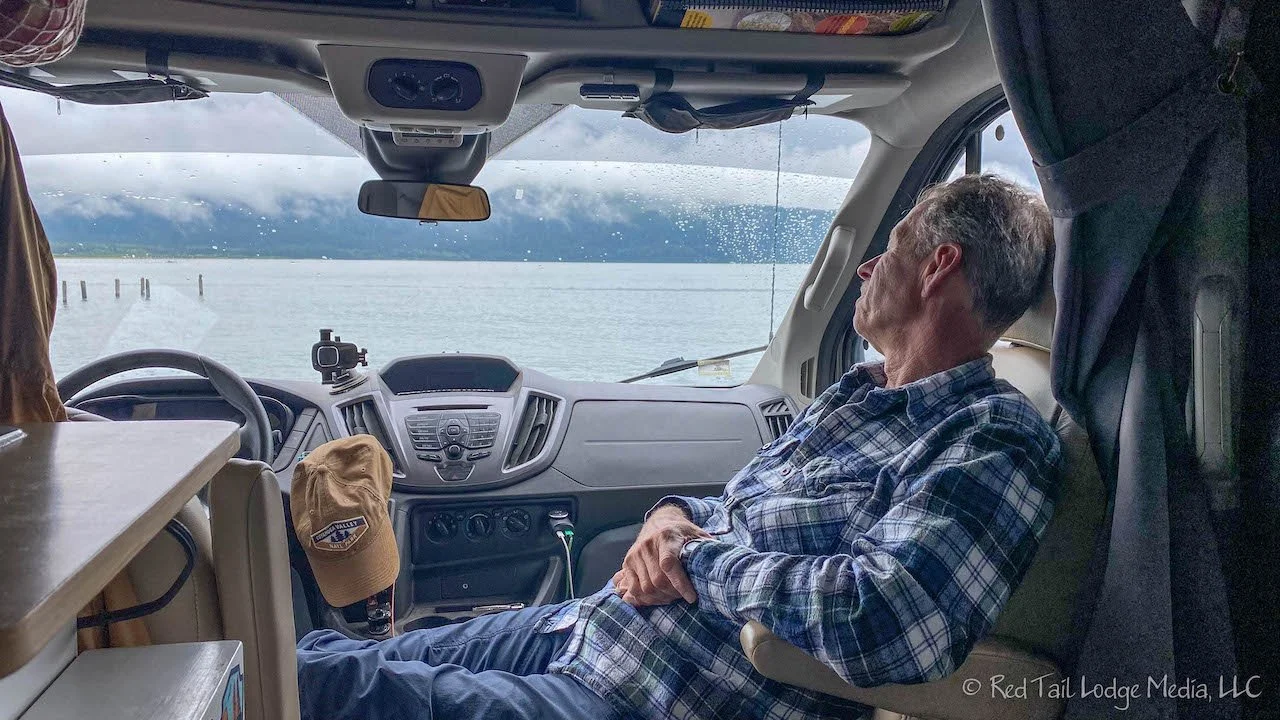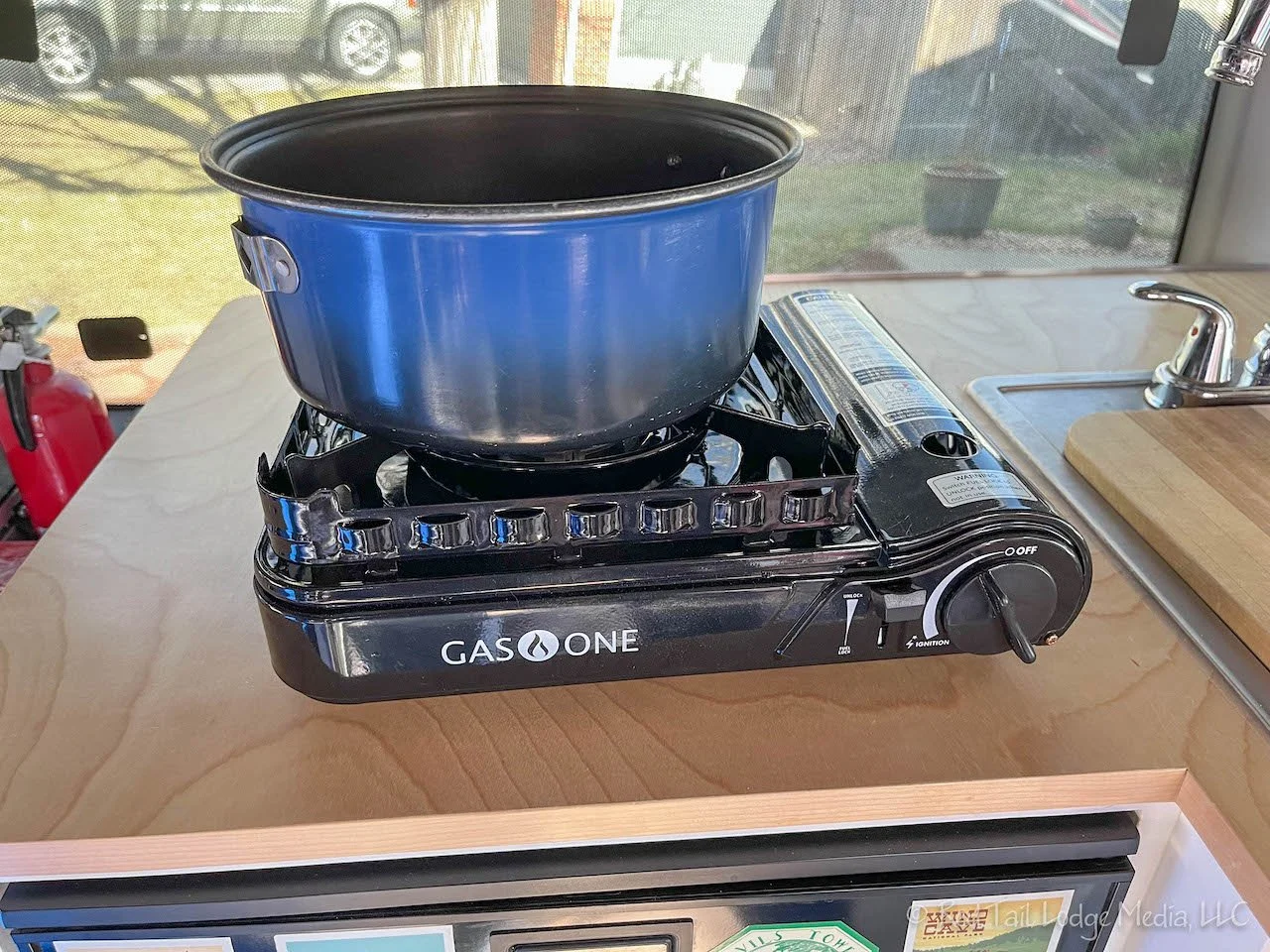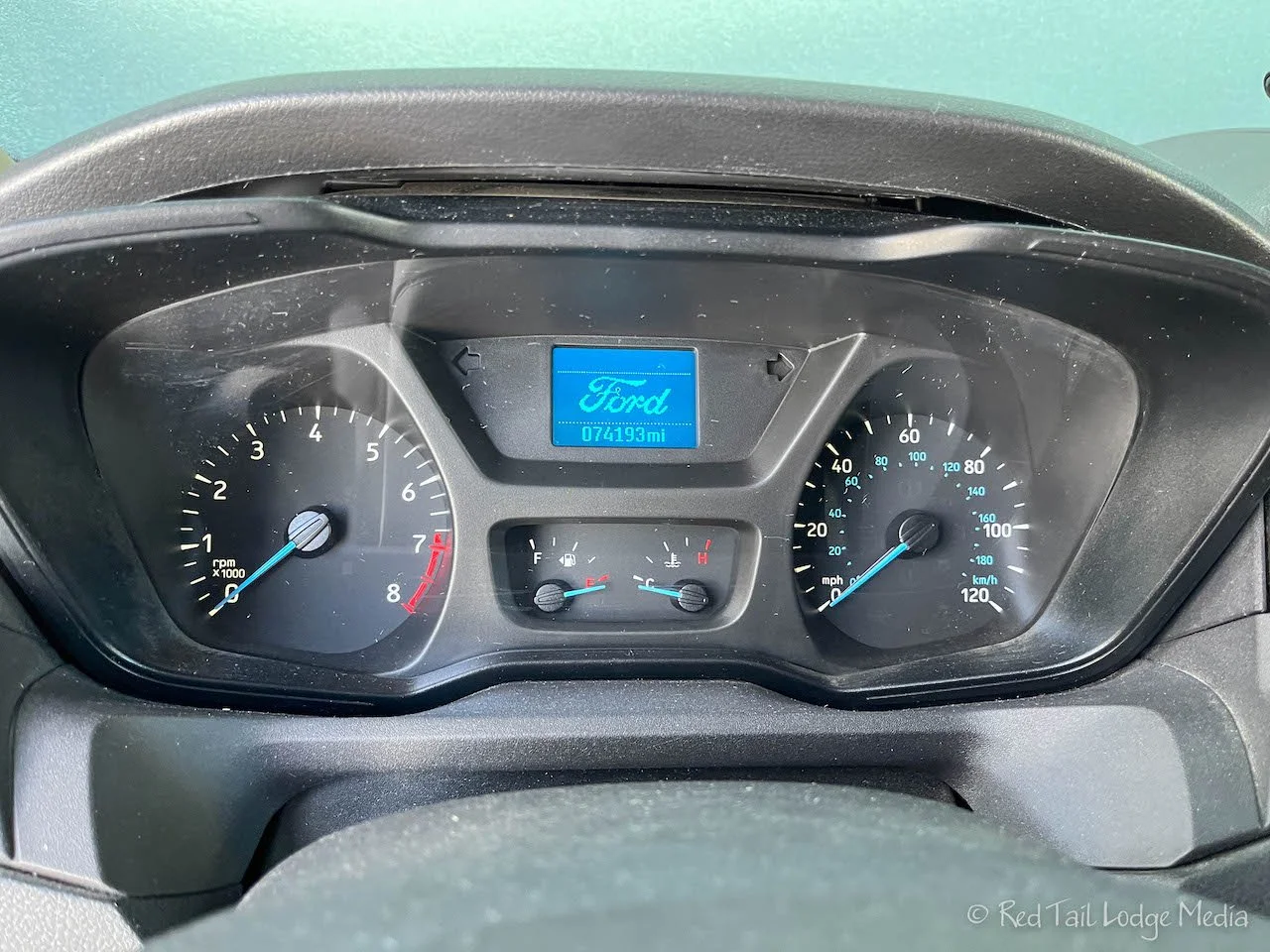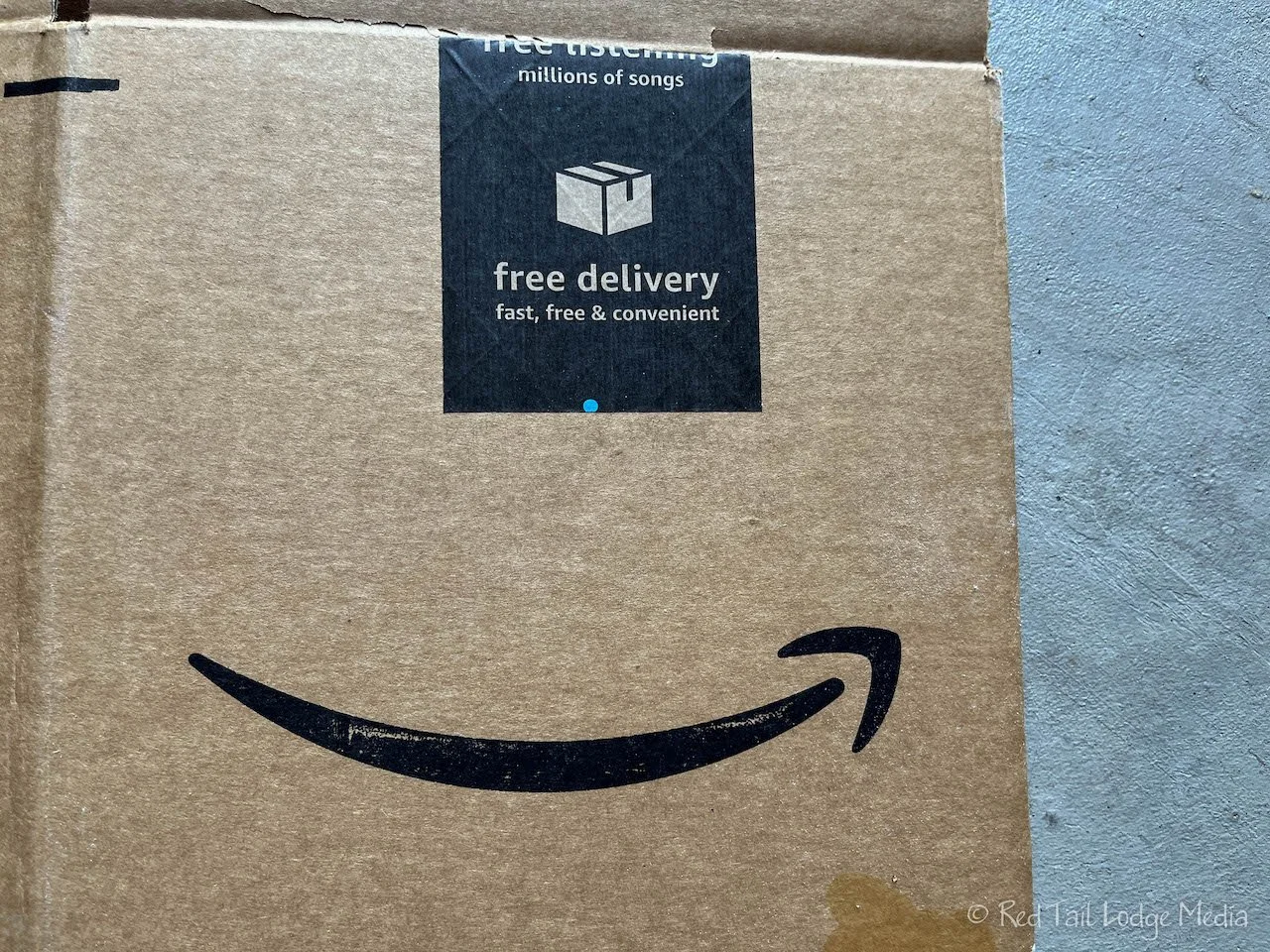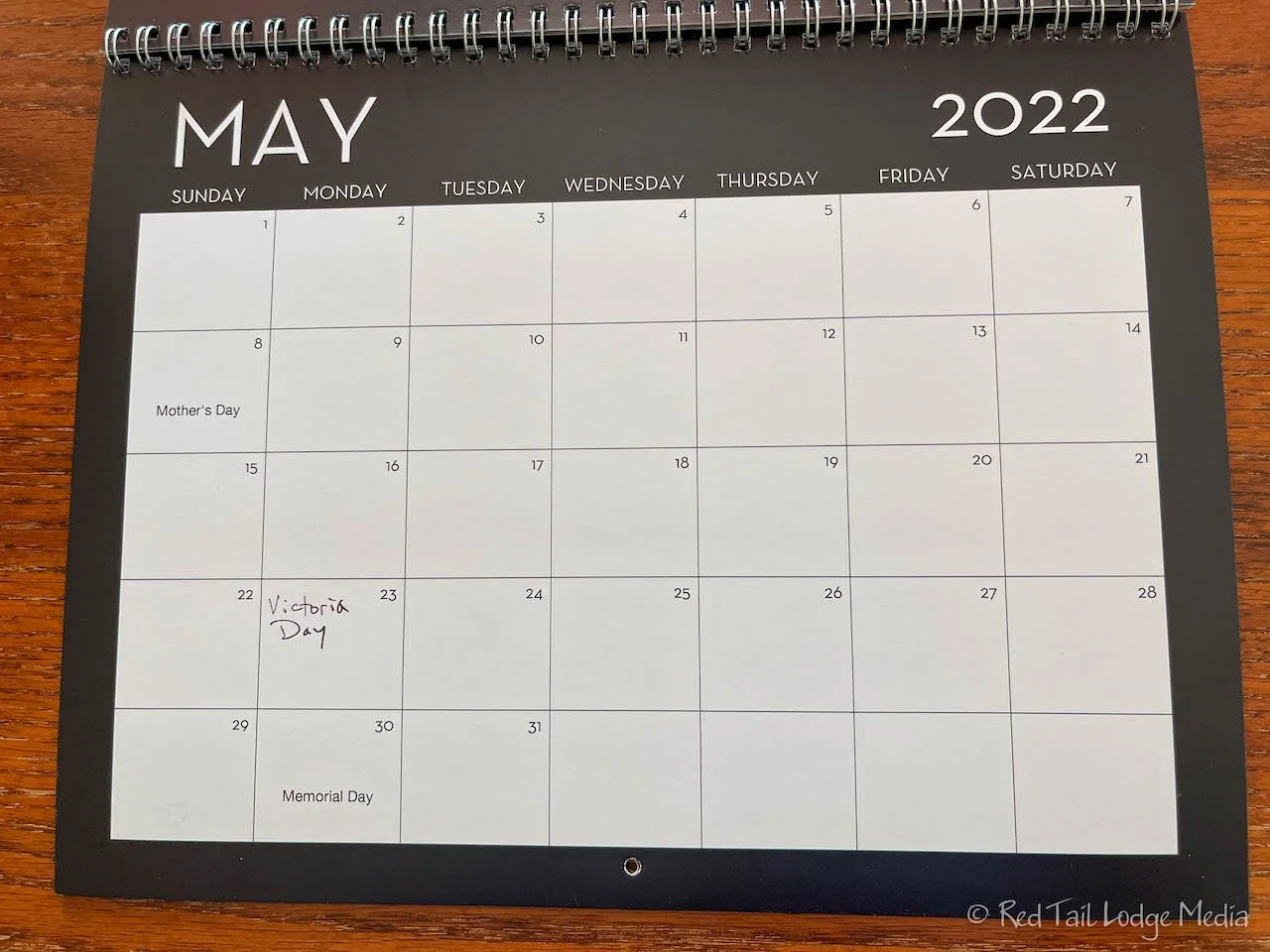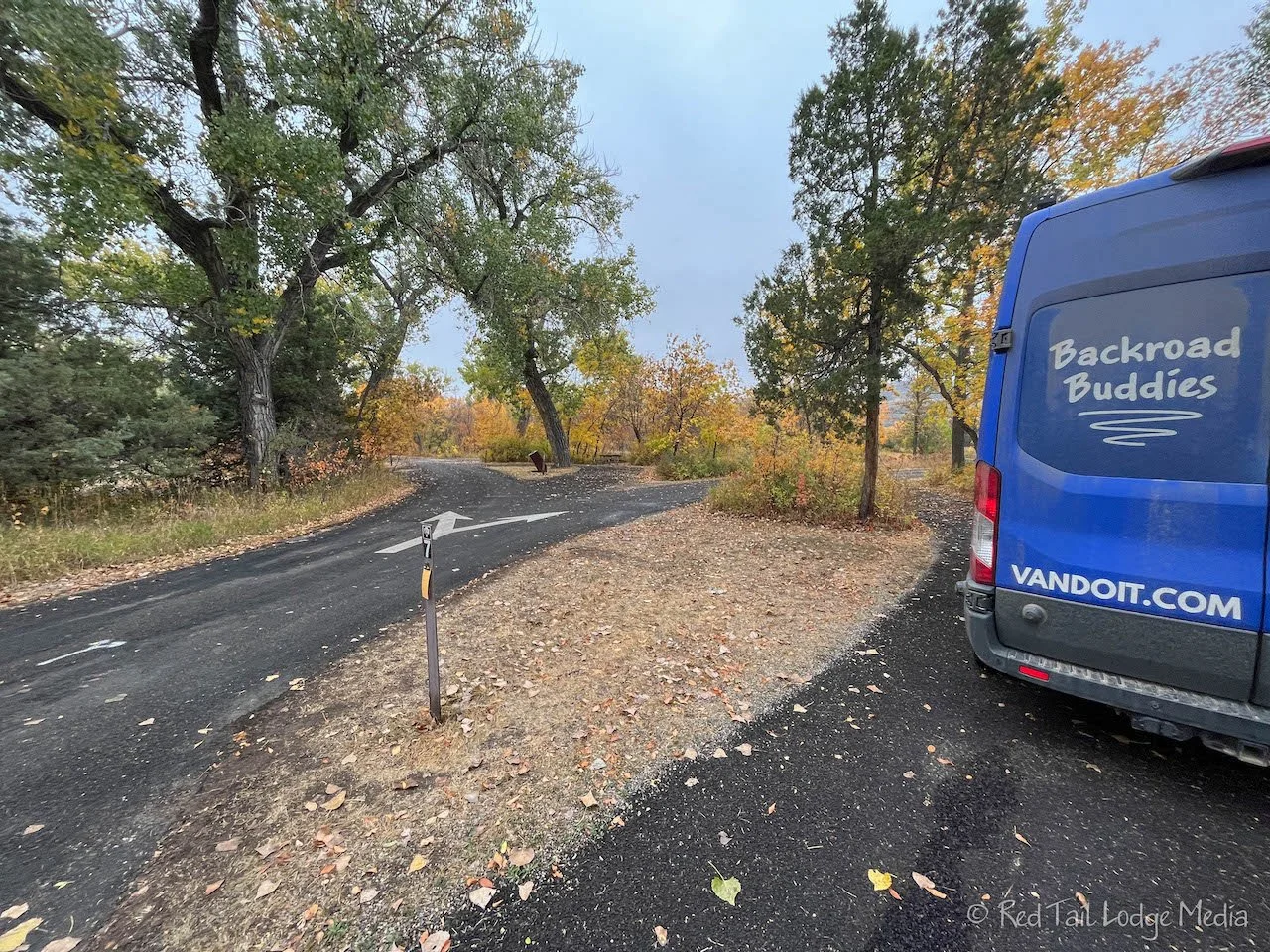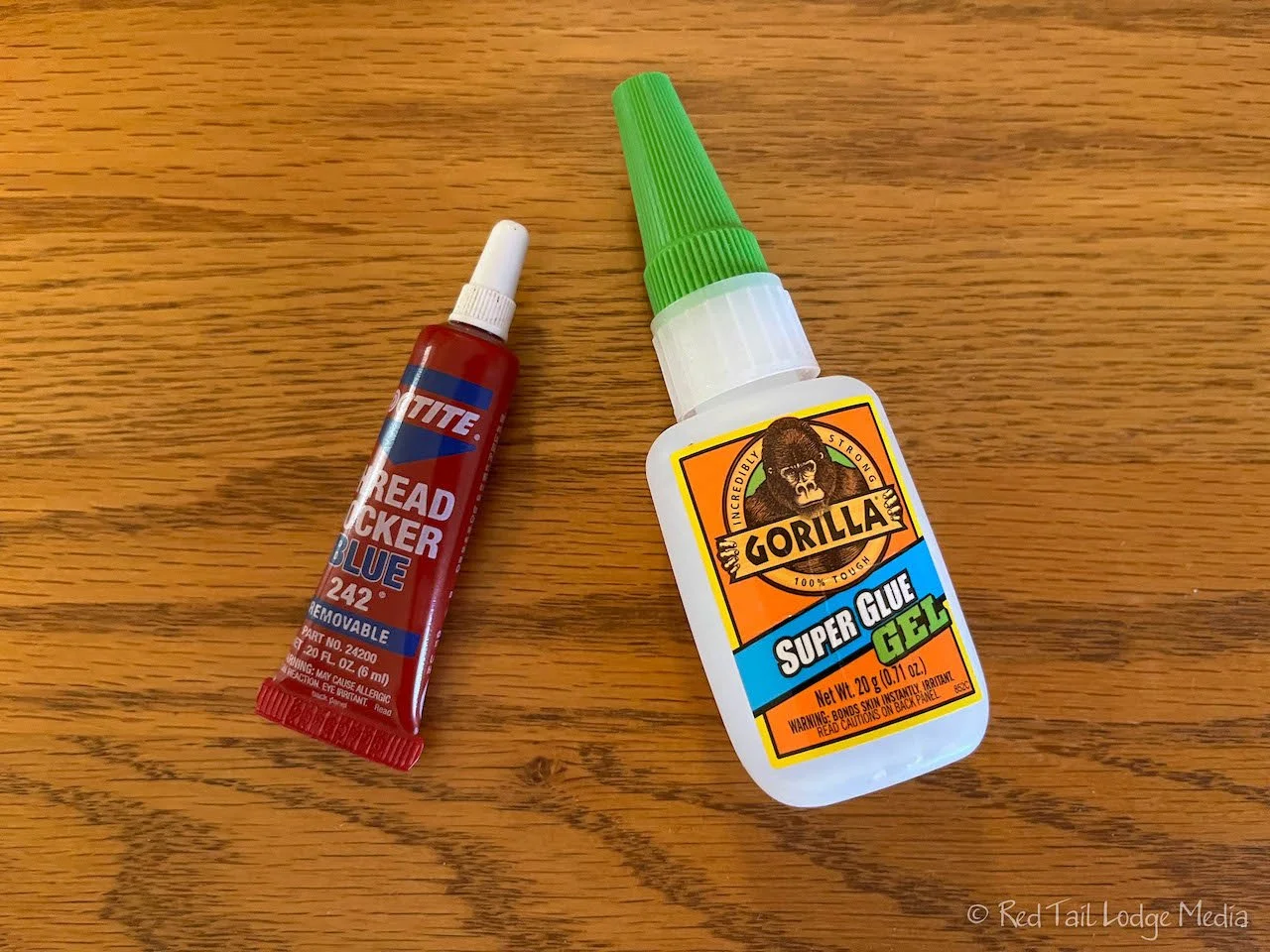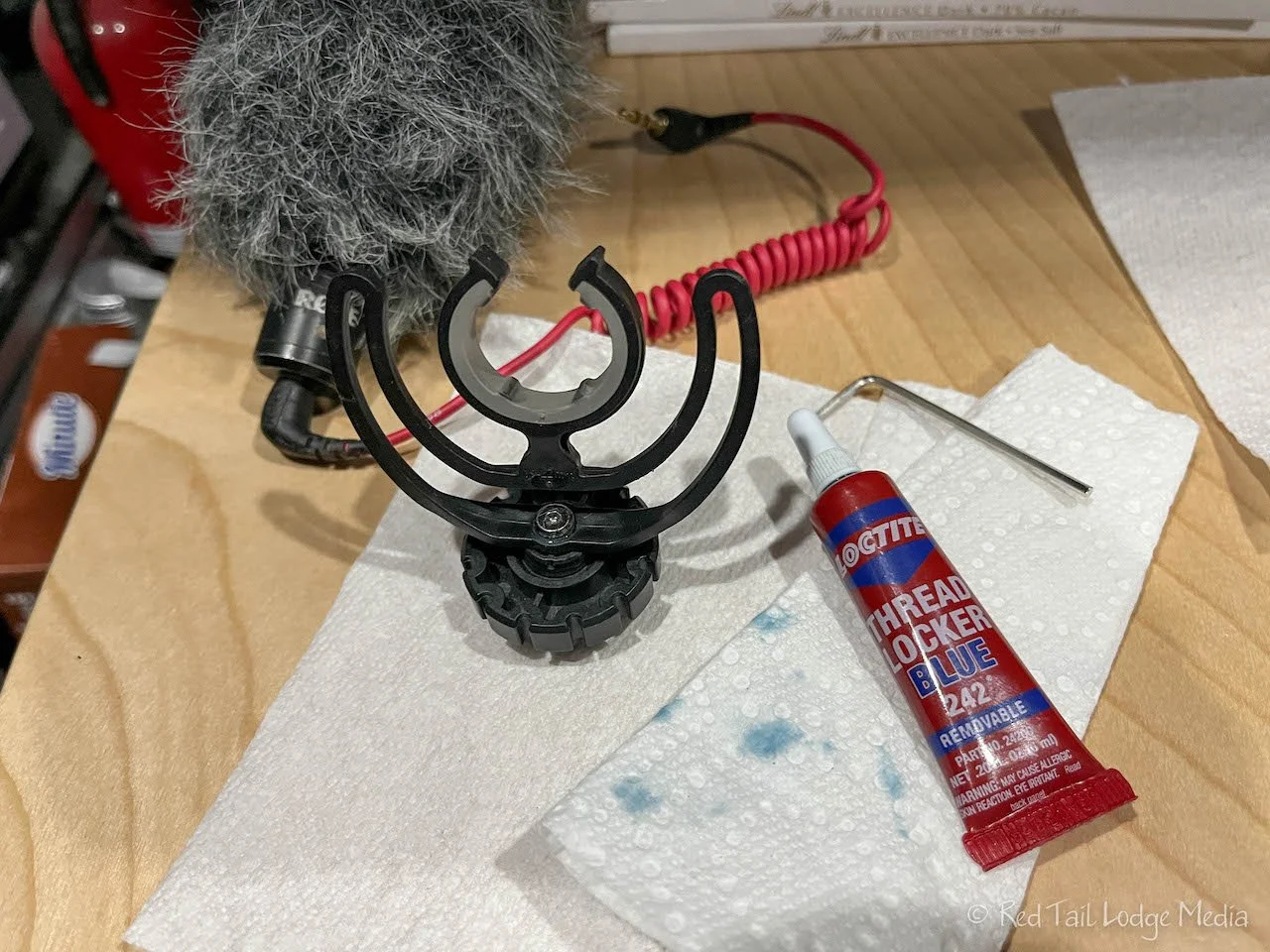Tips and Tricks From Season Four 2022
You would think that after traveling for several years, we wouldn’t have much new to learn. But learning is a never ending process. None of these items are life-changing, but we hope you find one or two of them helpful. Or spark ideas for your own solutions to issues you come across. These tips are in no particular order.
Tip One: Use a headlamp for fill light. When a subject’s face is in shadow for a photograph or video, photographers normally use a fill light. Ann was trying to shoot a video intro inside the van during a rainy day, but her face was too dark. She tried using the flashlight on her phone, but it was not bright enough. Aiming a headlamp (paid link) onto her face worked great.
Tip Two: Move the rug out of the way when using the camping toilet. Or better yet, put a water proof (plastic) wastebasket under it. We learned this lesson the hard way. Cleaning the rug and floor in the middle of the night when the camping toilet bag leaks is not fun. We’ll also not be buying the same brand of toilet bags and have removed them from our Gear page. The ones that leaked on us a couple of times were the Green Elephant Portable Toilet Bags.
Tip Three: Use Markup App on iPad to fill out PDF”s. This came in handy when we needed to complete and sign documents on the road without the need for a printer and/or scanner. An Apple Pencil makes signatures even easier.
Tip Four: Sign up for YouTube Premium for watching videos offline. Unfortunately, YouTube Premium only lets you watch downloaded videos on a mobile device, not a laptop. This made it hard for us to both watch the same video since we sit facing each other in the van. For a while, we were able to get around this restriction by using AirPlay from our iPad to Ann’s laptop. However, the video no longer displays on the iPad when we do that. We tried connecting our external monitor (paid link) to the iPad, but the audio is sent to the monitor and our monitor has no volume adjustment and plays way too soft. Instead, we connected the external monitor to the laptop while sending the video to it from the iPad. It was a rather convoluted solution, using three devices to be able to view a video simultaneously on two screens with sound. Then, part way through Season Four, it stopped working. The videos would not play using AirPlay. Bummer!
Tip Five: Pull out a small amount of floss before closing the lid to prevent losing the loose end inside the container. Ann bought a cheap container of floss and the vibrations of going down the road would eventually cause the floss to disappear back into the container quite often. After spending too much time fishing the loose end back out using a pair of tweezers, she found closing the lid on the loose end would hold it in place. In the future, she won’t buy the cheapest floss in the store. Other brands she had boughten don’t seem to have the same issue. Plus other floss cases can be snapped open to more easily access a lost loose end.
Tip Six: Pack a tick remover. We’ve never had an issue with ticks before, but we found four ticks on us this past spring. Even though it took several days to discover them all, we believe all four of the ticks were from the same hike we did in Montana. Luckily, we found the ticks before they latched on to us. Once they latch on, they are a little trickier to remove, or so we’ve heard. Ticks can transmit various diseases, so it is good to remove them as quickly as possible. Fortunately, we do not have any experience removing them and hopefully never will. However, having a tick remover with us makes us feel a little more at ease. We didn’t have any tick removers with us at the time we found the ticks, but we had three on order. It was almost like Keith had a premonition about the ticks and had ordered them from Amazon before we even discovered the first tick. We have them now, the Tick Patrol Tick Removers (paid link). One stays on Keith’s keychain, one’s in our first aid kit, while the third one is attached to Ann’s backpack.
Tip Seven: Turn the passenger seat sideways and use the driver’s seat as a foot rest. We’re not sure why it took us almost four years to discover this. In this position, it becomes the most comfortable seat in our van. Not only does it provide a nice foot rest, it provides a nice view out the front for the person sitting there and doesn’t block the view out the front for the person sitting under the bed. The center console cup holders are also more convenient with the seat turned, no longer making it necessary for the person to awkwardly reach behind them. Luckily we discovered this while we were in COVID isolation in Seward, Alaska. From our camp site, we had a nice view of the ships leaving and entering the harbor. To be fair, we took turns sitting in the passenger seat, making our confinement more enjoyable.
Tip Eight: Plan meals that share ingredients. When storage and fridge space are at a premium, using up leftover ingredients quickly frees up the space. A common sequence of meals for us is brats with sauerkraut and applesauce on the side, reubens, and hash browns with applesauce. One package or jar of sauerkraut is shared between the brats and reubens. A small jar of applesauce is split between the meal of brats and hash browns. Another ingredient that is hard to buy in small enough quantities is cabbage. So we might have a week of meals that includes cabbage soup, fried cabbage, and slaw so we can use up the whole head of cabbage.
Tip Nine: Schedule vehicle maintenance when on the road for extended periods of time. We took our van to a Ford dealer in Anchorage, Alaska for an oil change and other routine maintenance. They noticed that our tires were worn. Two of them were worn out and needed replacement. We replaced the two worn out tires. Having a blow out on the way back from Alaska would not have been fun.
Tip Ten: The suction type of windshield repair kits works better than the positive pressure type. Keith has used both types to fix chips on our windshield. In Tagish in the Yukon Territory, we used the suction type. Keith believes the suction type did a better job of filling in all the cracks and crevices. We’ll probably carry that type with us from now on. No matter which type you use, it is always better to repair the chips right away to prevent them from spreading and causing you to replace the whole windshield.
Tip Eleven: Even if you have a digital keypad, always take a vehicle key with you. This is another lesson we learned the hard way. We installed a digital keypad entry on our van at the beginning of the season. We really enjoyed being able to lock and unlock the van without having to pull out a key. Ann started getting lazy and did not carry her key on her. One morning, Keith changed pants and went to the campground restroom at the same time Ann went to the restroom. He forgot to move his key over to the new pair of pants. When we returned to the van, the keypad did not work. Luckily, Keith had his cell phone on him and was able to call a lock smith. We were back inside our van in less than an hour. But we were in a campground inside the city of Anchorage. Had we been in a remote location, such as Tetsa River Regional Park, the consequences may have been much different. In a location with no cell service for miles and not many people around, it may have been days before getting help, without a shelter. That would have been a rather dire situation. We still don’t know why the keypad stopped working, because it was functional again after that. There have been a few more times where the keypad stopped working, but we have not been able to figure out the circumstances that cause it to fail. We are now both careful to always carry our keys with us.
Tip Twelve: Make the best decisions with the information you have and let go of the things you cannot control. We try to follow this all the time, but we were forced to take this to heart even more so this season. There are so many things to worry about and so many things that can go wrong when taking such a long trip over such an extended period of time. What made it even worse was that we joined an RVing to Alaska Facebook group, where we were constantly getting information about how things had gone wrong for others and all sorts of bad things that were happening across Canada and in Alaska. Although we appreciated finding out timely information, we had to sometimes put blinders on and not worry about some things until we got there. There were reports about heavy smoke from wildfires in Fairbanks, a landslide near Seward that closed the Lowell Point Road which was the only route to our scheduled guided kayak trip, Yukon River flooding that closed some campgrounds, a Klondike Highway closure due to wildfires, an Alaska Highway closure due to the road being washed out, another washout closure on Richardson Highway, and people reporting that their Bald Mountain Air tours were canceled. We didn’t panic. By the time we reached Seward, Lowell Point Road had reopened. By the time we reached Fairbanks, the smoke had cleared. None of the other highway closures affected us. They either happened after we had passed through those areas or they were repaired by the time we reached them. Although half of Bald Mountain Air tours were canceled for the summer due to not being able to obtain a needed part to repair one of their planes, our tour was not canceled. What did affect our plans was coming down with COVID. But we isolated for the recommended time, cancelling some of our plans, and picking up our itinerary when we were able to. Were we disappointed about our canceled plans? Yes, but we tried not to dwell on it. The rest of our trip was still wonderful. Let it go.
Tip Thirteen: When plugging into shore power, tie something on your steering wheel as a reminder. We use a bright orange large twisty tie to keep our extension cord neat and tidy when stored in the van. When we pull it out to plug in to shore power, we wrap the twisty tie onto our steering wheel. Hopefully that will keep us from pulling away from the camp site with the cord still plugged in. That could be a costly mistake.
Tip Fourteen: Credit Unions don’t normally charge ATM fees. We have an account at a credit union. Their mobile app has an ATM locator showing fee free ATM’s which is handy while traveling. Be aware of what your bank policies are. While the owner of the ATM may not charge you a fee, some banks charge you a fee for using an ATM that is not theirs, such as Wells Fargo. Although, if there is not a Wells Fargo ATM near where you are, then not having the ATM owner charge you a fee and only getting hit with a Wells Fargo fee is better than getting hit with two fees for a single ATM withdrawal.
Tip Fifteen: Knock the dirt out of the feet of your camping chairs before putting them away. Since we store our camping chairs inside our van, anything we can do to help keep dirt out of the van is always nice.
Tip Sixteen: Look ahead and plan where to refill resources. This is especially helpful when traveling in remote areas where resources may be few and far between. Resources include such things as gasoline (or diesel and DEF, depending on what your vehicle(s) require), dump stations, potable water, laundry facilities, and groceries. Planning ahead will keep you from panicking when you run out of something and there is nothing nearby.
Tip Seventeen: Always carry some cash. Some campgrounds, stores, and restaurants do not take credit cards, especially in remote areas. Or their credit card equipment may be down. Or their internet connection is unreliable. Many first come/first serve government campgrounds only take cash or checks. Be prepared so you don’t limit your options.
Tip Eighteen: Drive slower to save gas. This is especially nice when gas prices are so high. The difference in gas mileage can be significant. Gas mileage decreases significantly at speeds greater than 50 mph (afdc.energy.gov/conserve/behavior_techniques.html).
Tip Nineteen: Amazon lockers and counter service pickup are great ways to get packages while you are on the road. Keep in mind that lockers (Amazon Hub Locker) will return your package if you don’t pick it up within three calendar days of when it was delivered to the locker. For counter service (Amazon Hub Counter), you have 14 days to pick up your package. There are also other restrictions on what can be delivered to either, so do your research (www.amazon.com/gp/help/customer/display.html?nodeId=201910770).
Tip Twenty: Use public transportation to avoid driving and parking a large vehicle in a busy city. Larger vehicles, such as camper vans with extended lengths or heights and most RV’s have issues finding places to park since they normally don’t fit in parking garages. Our Red Tail Lodge will normally fit into most parking spaces, but it is tight. It is also harder to manipulate a large vehicle in heavy traffic or to parallel park it. In Season Four, we used public transportation when visiting Vancouver (Vancouver, British Columbia - May 12th to 15th, 2022). We also used public transportation in Denali National Park, Banff, and Lake Louise, not because these places are large cities, but mainly because parking in some areas is difficult if not impossible due to their popularity. In Denali National Park, taking a bus is the only option to travel on parts of the park road. Even though public transportation may take longer, we find it more relaxing to let someone else drive and let us enjoy the scenery.
Tip Twenty One: Pay attention to holidays when planning your route. Some campgrounds require a three night minimum stay on holiday weekends. We were caught by surprise a couple of times. First, we didn’t realize some weekends were a Canadian holiday, such as Victoria Day in May. We ended up breaking our rule and only staying one night in a couple of campgrounds during the season as we needed to borrow a night to stay three nights in the next or previous campground for the holiday weekend.
Tip Twenty Two: Keep food particles out of your gray tank to prevent odors. Wipe the food particles from your plates into the garbage instead of letting them go down the drain. Or lick your plates clean! Sink strainers can help prevent unwanted pieces from going down the drain. If the gray tanks start to smell, add a little bit of chlorine bleach.
Tip Twenty Three: Leave the lens cap off the camera lens to keep it from fogging up during a cool and/or humid hike. It doesn’t help that Ann carries her camera on a Peak Design clip just above her armpit. The warm moisture hits the cold lens and condenses onto the lens. Leaving the lens cap off allows the moisture to dissipate and evaporate faster.
Tip Twenty Four: Remove your tag from your site post when you leave a campground (unless it is a reusable tag). Some campgrounds ask you to return the tag, but many do not. Removing your tag makes it easier for the next group of campers to determine if your site is now available. This is especially helpful for first come/first serve campgrounds. Yes, they could get out of their vehicle to check the dates on the tag, but seeing no tag on the post is much easier. Please be considerate of others.
Tip Twenty Five: Use clothes pins or binder clips to keep trash bags from slipping down into the waste basket. At one of the grocery stores in Canada, we couldn’t find bags to fit our waste basket. The ones we ended up buying were too small. A couple of spare clothes pins came in handy.
Tip Twenty Six: Pack locktite thread locker and super glue with you. You never know when they will be needed. Ann was having issues with the screw loosening on the external microphone holder on her camera. She carried a small Allen wrench and was tightening the screw during our hikes, sometimes multiple times during the same hike. Then the microphone got bumped and the cold shoe broke in half.
While Ann was gluing the cold shoe back together with super glue, she applied thread locker to the problematic screw. Now she has no issues with the external microphone attachment and no longer needs to carry an Allen wrench on hikes.
Tip Twenty Seven: Use a rubber band on containers in the fridge to keep them from popping open. When we parked on a slight slope for a picnic lunch, a package of blueberries fell out when we opened the fridge, spilling blueberries all over the floor. Now we keep a rubber band on packages of blueberries, and any other containers that would be messy to pop open on the floor. An ounce of prevention is worth a pound of cure.
If you liked any of these tips, please pass them on to others. Life is so much better when we help each other.
Check out our related video: Tips & Tricks Season Four
(RB)








